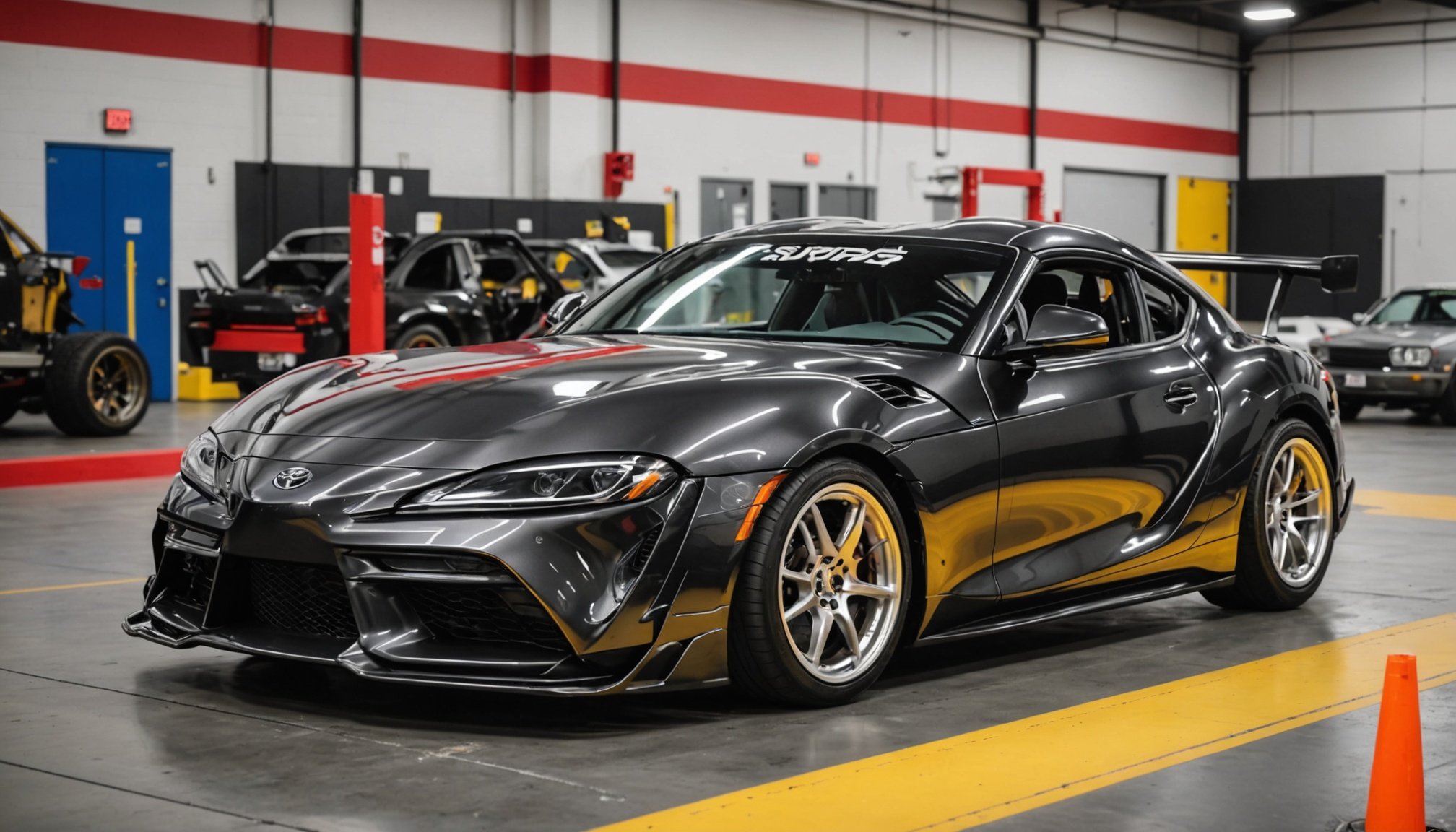Selecting the Right Roll Cage
Choosing the appropriate roll cage for your Toyota Supra demands careful consideration. There are various roll cage types available, each offering distinct benefits. Full cages provide comprehensive protection, enveloping the entire passenger area, while half cages often secure the front, offering a balance between safety and interior space.
When selecting a roll cage, consider material and weight. Aluminium, though lightweight, may not provide the robust strength needed for high-impact situations. Conversely, steel, particularly DOM and chromoly, offers superior protection but adds weight, affecting vehicle dynamics. The design intricacies can also influence performance, as some configurations might better preserve visibility and cabin space.
In the same genre : Mastering the Art of Cleaning and Re-oiling Your K&N Air Filter for Peak Ford Mustang Performance
Evaluating safety features is crucial. It’s essential to ensure your chosen Toyota Supra roll cage is compliant with track regulations, which often mandate specific designs and materials. Additionally, confirm its compatibility with existing safety equipment. Prioritize features that enhance both performance and security. Remember, the primary goal of a roll cage is to protect occupants during a rollover or collision, so thorough research into these facets will guide you in making an informed decision.
Required Tools and Materials
Having the correct roll cage installation tools is essential when working on Toyota Supra modifications. Begin with a comprehensive tool list that includes items such as a power drill, saw, and welding equipment. Precision tools, like a torque wrench and measuring tape, are vital for accurate alignment.
In parallel : The ultimate guide to choosing the ideal anti-theft tracker for your vintage car
When it comes to the materials, you’ll need reinforcement components and attachment points. High-quality steel tubing, suitable for roll cages, should be prioritized. Bolts, brackets, and plates for secure attachment are also essentials. These ensure not just stability but also safety, particularly during harsh impacts.
Sourcing quality materials and tools is crucial. Seek vendors known for their automotive-grade supplies. Investing in materials that meet industry standards will pay off by enhancing the longevity and reliability of your roll cage. Opt for suppliers with a reputation for excellence to avoid compromising on quality.
Additionally, consider consulting professional mechanics or enthusiasts who have conducted similar installations. They can provide insights into reliable sources and help refine your tool list. This foresight and preparation can significantly streamline the installation process and elevate the effectiveness of your Toyota Supra modifications.
Safety Considerations
When adding a roll cage to your Toyota Supra, enhancing track safety is the primary aim. Roll cages provide a significant safety margin, especially on track days, by protecting occupants during rollovers. This addition is not just about safety but is also a ticket to participate in many racing events. Ensuring compliance with safety regulations is critical. These standards dictate the materials and design allowed, which are often specific to motorsport associations.
Compliance with safety regulations starts with understanding the guidelines stipulated by relevant racing authorities. This typically involves using approved materials like steel with precise specifications and following design criteria that ensure maximum protection. It’s essential to verify that the roll cage fits snugly within the interior without impeding safety equipment like seatbelts or airbags.
Improper installation poses potential risks, which can compromise the integrity of the roll cage. Ensuring a skilled installation is essential for optimal protection. Any error in fitting or securing could lead to failures under stress, negating the benefits of having a roll cage. Selecting a professional installer and adhering strictly to guidelines mitigates these risks, guaranteeing a safer racing experience.
Compliance with Track Regulations
Preparing your Toyota Supra for track days demands strict adherence to track day regulations. These rules ensure both safety and fairness in the sport. For your roll cage to be compliant, it must align with the specifications set by motorsport authorities. They usually require using high-grade steel tubing and following precise design protocols.
Preparing for Inspections
Before hitting the track, your vehicle will undergo safety inspections. Inspectors will check that your roll cage adheres to the approved design standards, including tubing size and mounting points. Expect them to scrutinise the weld quality or the secure bolting of the cage to the car’s chassis.
Compliance Checklist
To ensure your compliance checklist is complete, verify the following:
- Material Quality: Use only steel that meets the specific standards.
- Installation Precision: Ensure all welds and joints are properly executed.
- Fit Standards: The cage should fit seamlessly within the car’s interior without obstructing essential safety equipment like seatbelts.
Adhering to these safety inspection guidelines equips you for a smoother, safer track experience, protecting both your investment and personal safety.
Installation Techniques
Installing a roll cage in your Toyota Supra can be a rewarding yet challenging task. Begin by planning your installation process meticulously, as precision and accuracy are paramount. Start with careful measurement of the interior space. This ensures a snug fit and prevents interference with existing safety features like seatbelts.
When preparing for the DIY roll cage installation, ensure all components are prepped and ready. Begin with the main hoop, ensuring it aligns perfectly with your measurements. Follow with the side bars, front supports, and rear stays. Each piece should fit seamlessly into its designated position, maintaining the integrity of the installation process.
Welding or bolting the roll cage requires professional precision. Use a high-quality welder or grade-A bolts to secure joints, ensuring stability. Consistent welds are crucial for durability, while bolts should be tensioned to specification for security.
The installation guide highlights best practices, emphasizing the need for thorough inspection of each joint post-installation. Any visible flaws should be rectified immediately to uphold safety standards and performance integrity. Properly installed, your roll cage not only boosts safety but enhances your Supra’s racing capabilities.


